Understanding Teletherapy and Its Core Principles
Teletherapy, a form of mental health treatment delivered remotely via digital platforms, has revolutionized access to care across all age groups. Utilizing video calls, phone sessions, and online messaging, this approach overcomes many traditional barriers such as geographical distance, transportation challenges, and stigma associated with in-person visits. It provides a flexible, private, and continuous form of support, accommodating various therapy types including individual, group, and family sessions. As technology advances, teletherapy incorporates interactive tools like virtual pets and movement activities, ensuring engagement for children and adolescents. During the COVID-19 pandemic, its importance was amplified, proving to be a vital component in maintaining mental health services worldwide.
What is Teletherapy and How Does It Work?
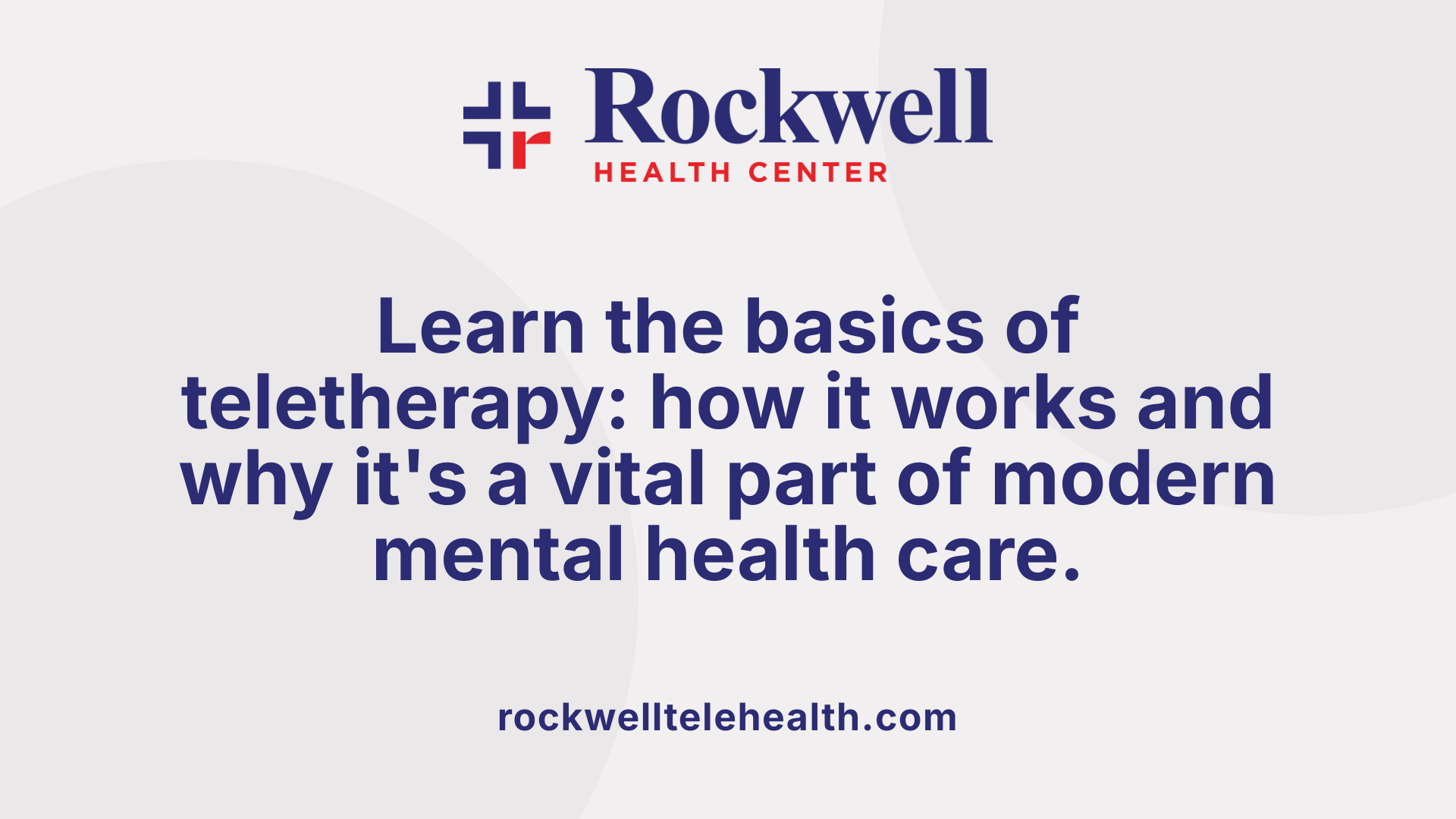
What is teletherapy and how does it work?
Teletherapy is a way of delivering mental health treatment remotely using digital technology. Instead of visiting a therapist's office, clients connect with their mental health professionals through video calls, phone conversations, or online messaging platforms.
This approach makes therapy more accessible and convenient, especially for children, teens, and adults who live in rural or underserved areas. It helps eliminate common barriers like transportation issues, stigma, and scheduling conflicts.
Teletherapy can include various types of services. These range from individual sessions focused on personal mental health concerns, to group therapy that provides peer support, or family therapy involving multiple members. The use of technology allows therapists to tailor their methods, such as using interactive tools and activities, to each client’s needs.
Technology plays a crucial role in this model. Secure video platforms, encrypted messaging, and tracking tools help ensure privacy and safety. Evidence shows that teletherapy is just as effective as in-person therapy for many conditions, including anxiety, depression, ADHD, and autism.
However, there are some challenges. Technological issues like poor internet connection can disrupt sessions or make engagement difficult. Despite these, teletherapy has become an essential part of mental health care, especially highlighted during the COVID-19 pandemic, allowing support to continue regardless of physical location.
Benefits of Teletherapy Across Age Groups
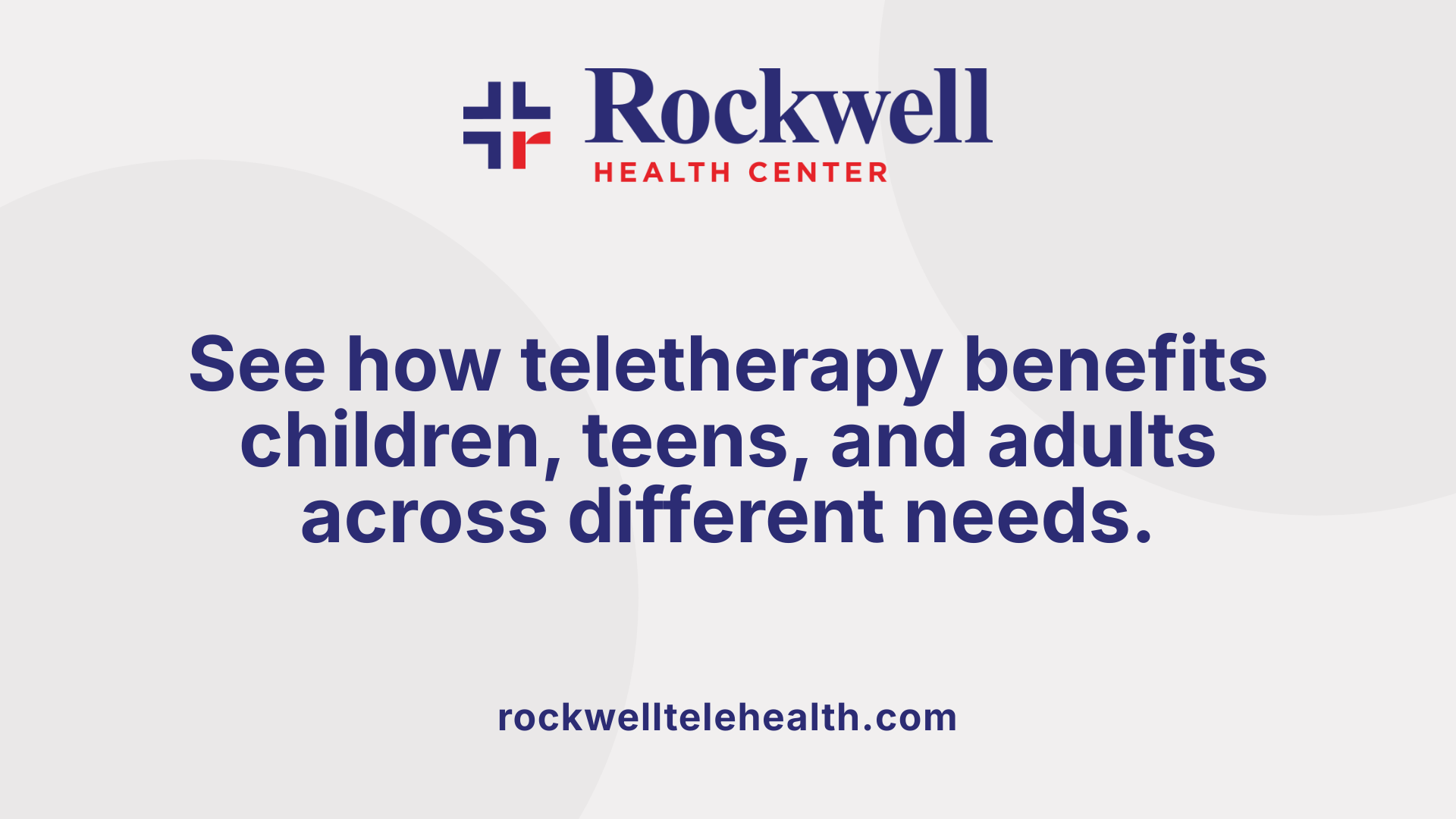 Teletherapy offers numerous advantages for children, teens, and adults by significantly improving access to mental health services. For young clients, engaging and interactive digital tools—such as art therapy, movement activities, and virtual play—help sustain their attention and foster meaningful connections with therapists. This tailored approach makes therapy more effective and enjoyable.
Teletherapy offers numerous advantages for children, teens, and adults by significantly improving access to mental health services. For young clients, engaging and interactive digital tools—such as art therapy, movement activities, and virtual play—help sustain their attention and foster meaningful connections with therapists. This tailored approach makes therapy more effective and enjoyable.
Teenagers often find virtual therapy particularly appealing because it feels informal and less intimidating. The flexibility of scheduling and the comfort of being at home encourage engagement and reduce barriers to seeking help. Research shows that over 90% of teens report satisfaction with online care, and many experience symptom improvement within a few months.
Adults also benefit from the convenience of teletherapy, especially those facing logistical challenges like transportation issues, busy schedules, or living in remote areas. Telehealth breaks down these barriers, providing timely and ongoing support that fits easily into daily life.
Studies confirm that teletherapy is just as effective as face-to-face treatment for diagnosing and managing a variety of conditions, such as anxiety, depression, ADHD, and behavioral issues. It supports early intervention and ongoing care, leading to better clinical outcomes.
Overall, the ability to connect from home, coupled with privacy and flexibility, enhances treatment adherence. It also reduces stigma, making it easier for all age groups to seek help when needed.
| Age Group | Benefits | Specific Features |
|---|---|---|
| Children | Engagement through play and activities | Interactive tools, creative therapies |
| Teens | Comfort, informal setting, flexible scheduling | Online chat, video sessions, peer support options |
| Adults | Convenience, accessibility, privacy | Flexible hours, easy rescheduling, confidentiality |
| All Ages | Improved access, reduced barriers, positive outcomes | Effective symptom management, early diagnosis |
Teletherapy continues to expand as a highly effective and accessible form of mental health care, especially crucial during times when traditional in-person visits are challenging.
Features and Methods in Online Mental Health Support
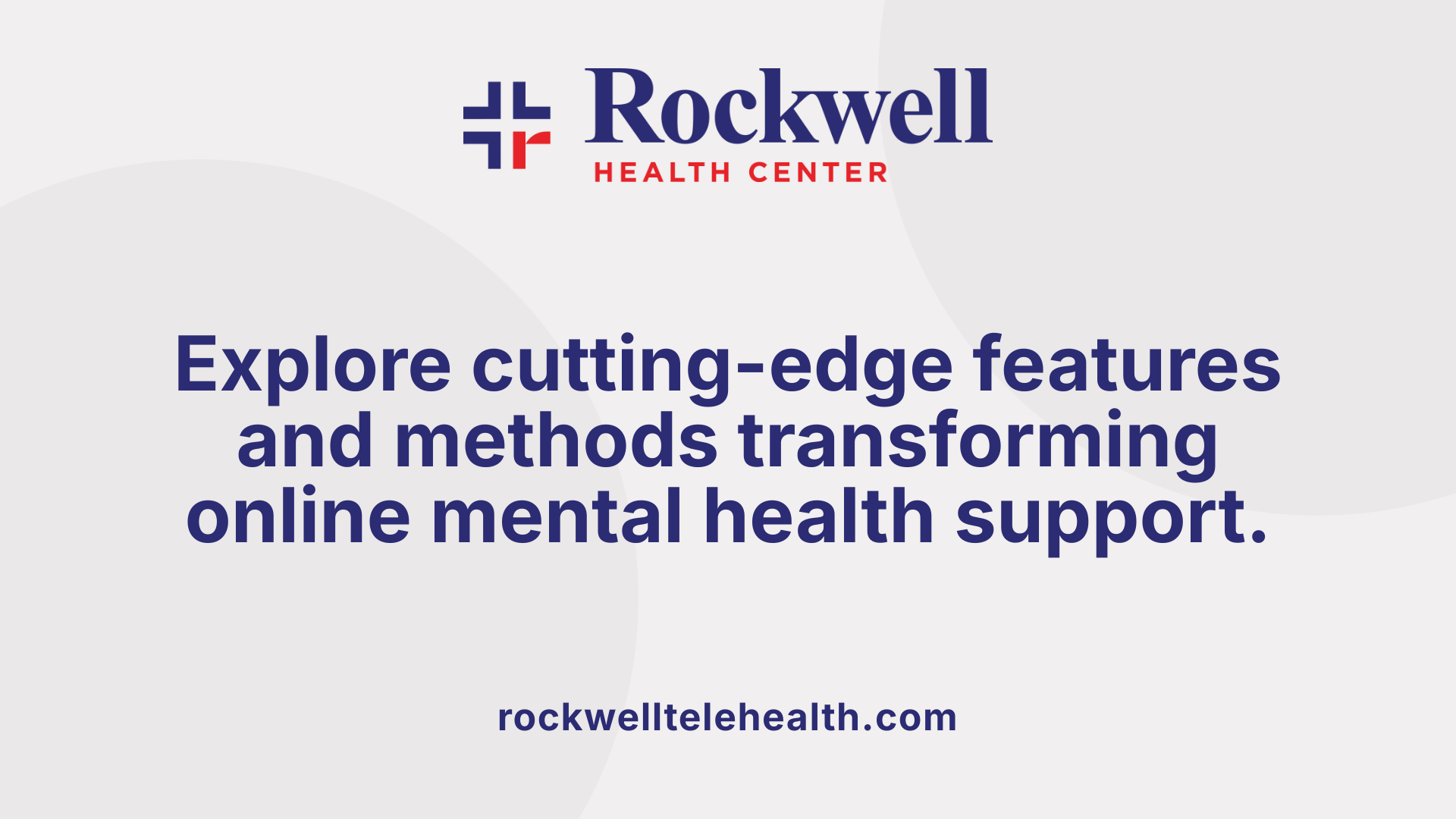 Online mental health support leverages a variety of features and innovative techniques to effectively serve diverse populations, including children, teens, and adults. Secure communication platforms such as high-quality video calls and instant chat messaging are fundamental, ensuring privacy and real-time interaction between clients and therapists.
Online mental health support leverages a variety of features and innovative techniques to effectively serve diverse populations, including children, teens, and adults. Secure communication platforms such as high-quality video calls and instant chat messaging are fundamental, ensuring privacy and real-time interaction between clients and therapists.
Digital assessments and tracking tools are regularly employed to monitor symptoms, track progress, and modify treatment plans accordingly. These tools enhance personalized care, making therapy more responsive to individual needs.
Engaging interactive methods play a crucial role in maintaining client involvement, especially with young users. Techniques like art therapy, movement-based activities, and interactive games help children and adolescents express emotions and build skills in an accessible way.
Emerging technologies such as virtual reality (VR), augmented reality (AR), and artificial intelligence (AI) are increasingly integrated into online mental health services. VR and AR can create immersive environments for exposure therapy or relaxation, while AI-driven chatbots and digital phenotyping support early detection and continuous monitoring.
Customization of approaches based on age, cultural background, and individual preferences is vital. Therapists tailor interventions and communication styles to suit specific demographic groups, ensuring relevance and effectiveness.
Family involvement is supported through family therapy sessions and support mechanisms, recognizing the importance of a strong support system in overall mental health.
Usability, digital literacy, and trust are essential elements for success. Platforms are designed to be user-friendly, culturally sensitive, and secure, with encryption and privacy policies to protect sensitive information.
These features and methods collectively enhance accessibility, engagement, and outcomes in online mental health support, particularly for populations facing barriers like stigma, geographic isolation, or limited local services.
Types of Mental Health Issues Addressed by Teletherapy
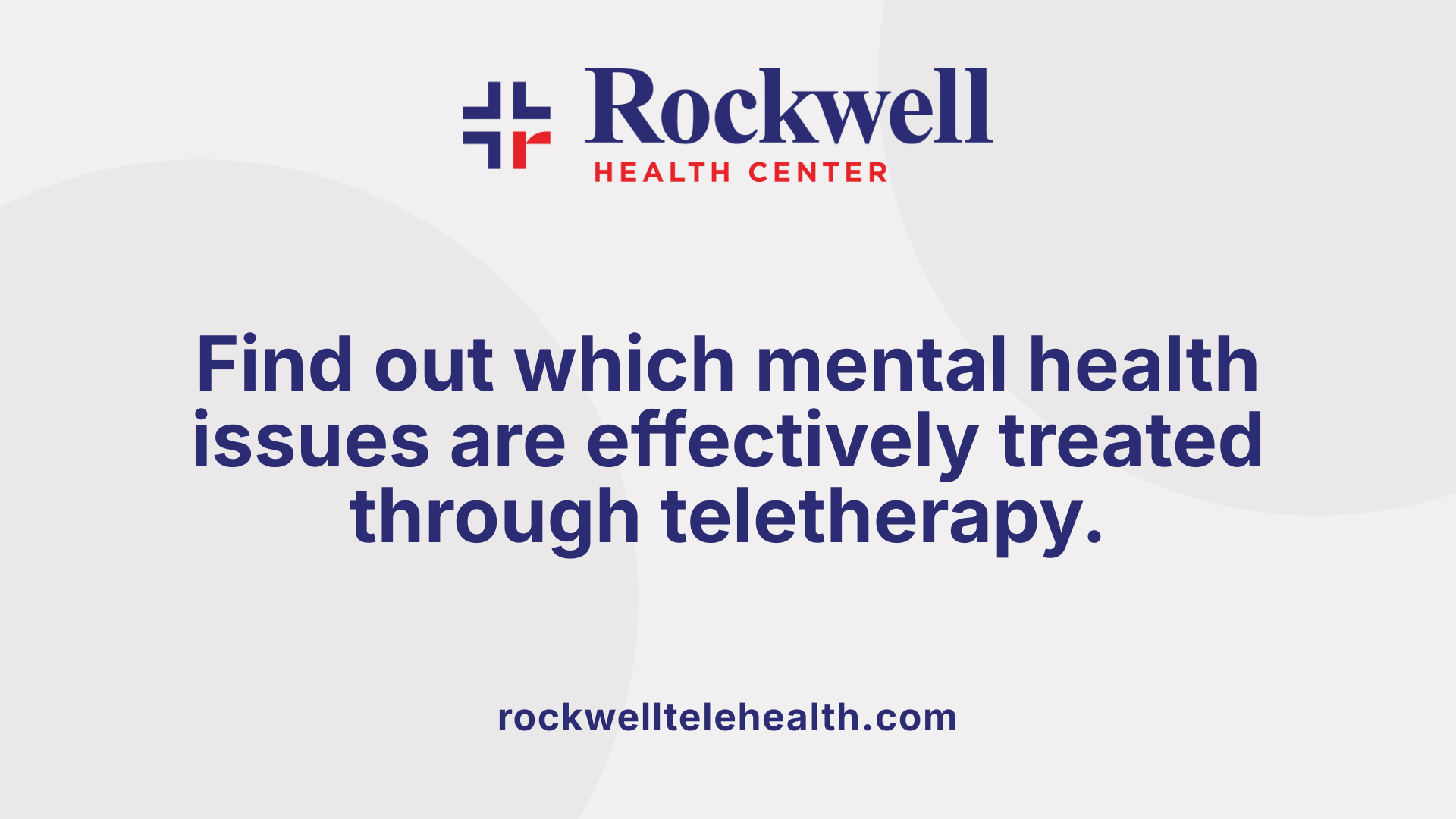
What types of mental health issues can be addressed through teletherapy for different age groups?
Teletherapy has become a practical and effective way to treat a wide array of mental health issues across various age ranges. For children and teens, issues like anxiety, depression, obsessive-compulsive disorder (OCD), trauma, and behavioral concerns such as ADHD are commonly addressed through specialized online programs. Research confirms that interventions like internet-based cognitive-behavioral therapy (CBT), family therapy, and interactive digital tools effectively reduce symptoms in young clients.
For adults and older populations, teletherapy supports treatments for stress, PTSD, bipolar disorder, and other mood or anxiety disorders. Videoconferencing and telepsychiatry enable consistent treatment, medication management, and coping skills development from the comfort of home.
Particularly in rural or underserved areas where mental health professionals are scarce—up to 90% of counties lack child mental health specialists—teletherapy bridges the gap efficiently. The flexibility of scheduling and the ability to access care without transportation or stigma barriers make telehealth especially beneficial.
Overall, evidence indicates that teletherapy is versatile and adaptable, effectively treating a variety of conditions by tailoring approaches to the developmental and individual needs of clients across age groups.
Availability and Suitability of Online Counseling Services
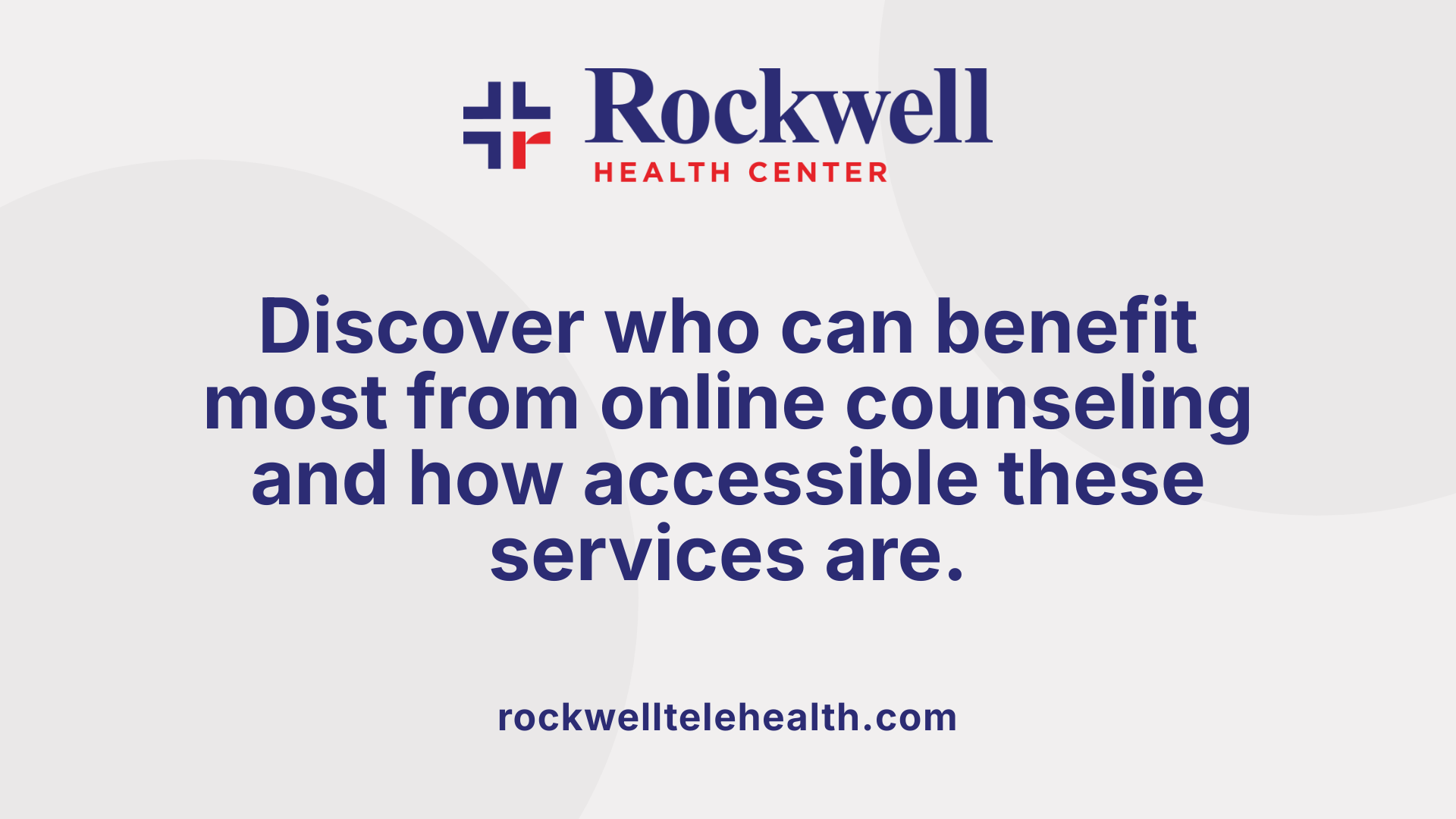 Online counseling has become a versatile option for individuals across all age groups, including children, teens, and adults. These services offer greater accessibility by overcoming barriers such as transportation issues, long wait times, and geographic limitations, especially in underserved or remote areas.
Online counseling has become a versatile option for individuals across all age groups, including children, teens, and adults. These services offer greater accessibility by overcoming barriers such as transportation issues, long wait times, and geographic limitations, especially in underserved or remote areas.
For children and adolescents, tailored interventions that include engaging elements like games, storytelling, and interactive activities improve motivation and make therapy more effective. Platforms often incorporate tools like virtual pets or drawing games to keep young clients interested and involved.
The suitability of online therapy depends on developmental stages and specific needs. While most mental health issues can be addressed virtually—such as anxiety, depression, or behavioral concerns—some techniques, particularly those requiring physical contact or sensory work, may be less effective online. Adolescents typically find digital therapy convenient and less intimidating, leading to higher engagement and positive outcomes.
Technological requirements include a stable internet connection, compatible devices like smartphones or tablets, and user-friendly platform features. While many families can access this easily, barriers like lack of devices, poor internet, or low tech literacy can hinder use.
Research supports the acceptance of online therapy, with over 90% of teens reporting satisfaction. Many young clients appreciate the flexibility and privacy it offers, and families often prefer it to traditional visits. Providers, including licensed therapists with specialized training, deliver evidence-based interventions tailored to each individual’s needs.
Insurance coverage and affordability are crucial. Many telehealth services accept Medicaid and private insurance, making therapy more accessible financially. Additionally, some platforms offer sliding scale fees or flexible payment plans, ensuring broader access.
In summary, online counseling is a highly accessible and adaptable resource for children, teens, and adults when matched appropriately to the individual's developmental level and circumstances, provided technological and financial barriers are addressed.
Research Evidence on the Efficacy of Teletherapy
Studies and Trials Demonstrating Effectiveness
A substantial body of research has confirmed that teletherapy is a powerful tool for mental health treatment. Large-scale randomized controlled trials and systematic reviews have consistently shown that outcomes for clients receiving teletherapy are comparable to those who attend in-person sessions. For example, research involving children, teens, and adults with issues such as anxiety, depression, and post-traumatic stress disorder (PTSD) demonstrates similar symptom reduction and quality of life improvements across delivery modes.
Comparison with In-Person Therapy Outcomes
When comparing teletherapy to traditional in-person therapy, the results are largely equal. A 2019 analysis of over 3,000 youth across multiple studies found that asynchronous and live internet-based cognitive behavioral therapy (CBT) helps reduce anxiety and depression symptoms effectively. Additionally, research shows that many clients prefer virtual options, citing convenience and comfort, which can lead to higher engagement and retention.
Key Findings from Systematic Reviews and Large Studies
Systematic reviews, including a 2014 review from The Journal of the Canadian Academy of Child and Adolescent Psychiatry, highlight that telehealth delivers treatments as effective as face-to-face services. Northwestern University’s Dr. David Mohr emphasizes that telehealth can even outperform in-person therapy when it comes to long-term adherence and consistency.
Suitability for Diverse Conditions and Populations
Teletherapy proves effective for a variety of conditions: anxiety, depression, OCD, ADHD, Autism, behavioral concerns, and speech and language issues. It is particularly beneficial for rural populations, where the shortage of mental health specialists is significant—up to 90% of U.S. counties lack child mental health providers. The modality provides a flexible, accessible, and engaging environment tailored to children, teens, and young adults.
Retention and Long-Term Benefits
Retention rates are high, with many clients experiencing meaningful improvements within 12 weeks, and some completing therapy in fewer than six months. The consistent engagement, combined with personalized, evidence-based interventions, supports sustained progress and resilience. Overall, research confirms that teletherapy is a credible, effective, and versatile approach to delivering mental health care across diverse settings and populations.
The Future of Teletherapy in Mental Health Care
As evidence continues to grow and technology advances, teletherapy is poised to become an integral part of comprehensive mental health services. Its ability to bridge gaps in access, tailor interventions to individual needs, and support diverse populations makes it a vital tool in promoting mental well-being across the lifespan. Embracing innovations and addressing challenges like digital disparities will further enhance its effectiveness, ensuring that mental health support remains accessible, personalized, and effective for children, teens, and adults alike.
References
- Healthy Young Minds - Online Therapy for Children & Teens
- Teletherapy with Kids and Teens: How It Works and Why It ...
- We Tested 65 Online Therapy Companies
- Online Therapy Designed for Teens and Young Adults
- The 6 Best Online Therapy Services for Kids
- The Benefits of Teletherapy for Teens and Young Adults
- Teletherapy Can Be Even Better Than In-Person ...
- Online Counseling for Teens













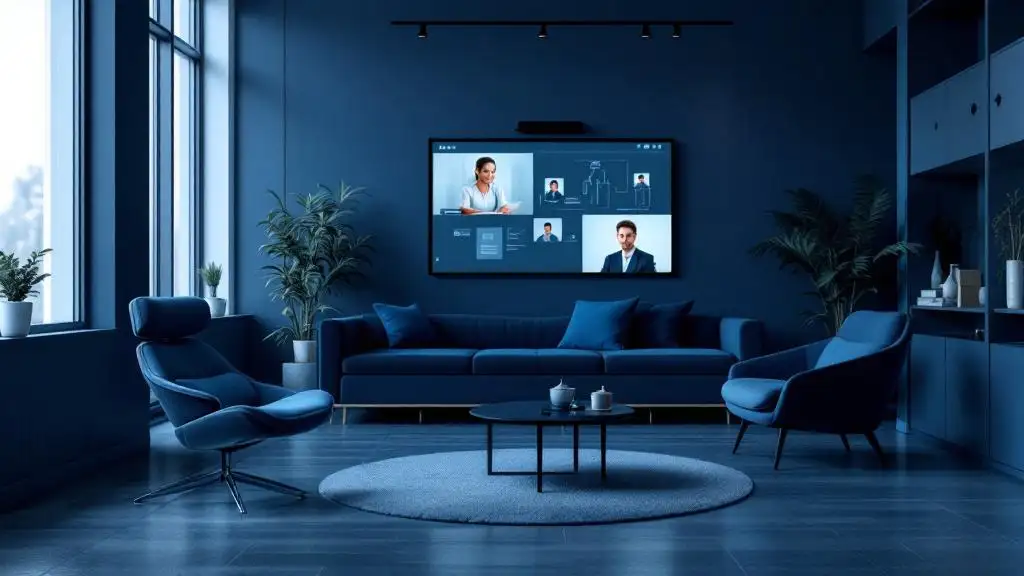










































































.png)